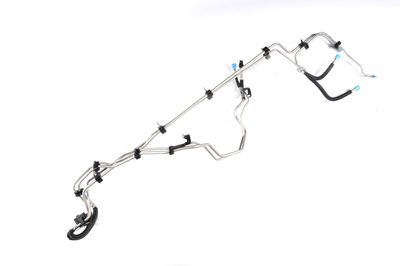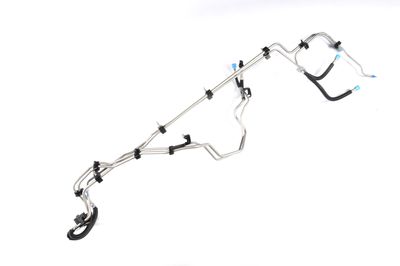Answer
Aug 13, 2024 - 03:11 PM
A standard fuel line refers to a type of hose or tubing designed to transport fuel from the fuel tank to the engine or other fuel components within a vehicle. These lines must be made of materials that can withstand the chemical properties of various types of fuel, including gasoline, diesel, ethanol blends, and sometimes even biodiesel.
Key Characteristics of Standard Fuel Lines:-
Material:
- Rubber: Traditional fuel lines are often made of reinforced rubber, which is flexible and resistant to the fuel's corrosive properties.
- Nylon: Modern vehicles may use nylon fuel lines, which are lighter and more durable than rubber, with better resistance to ethanol-blended fuels.
- Metal: In some cases, metal (such as steel or aluminum) fuel lines are used, particularly for high-pressure fuel systems or where durability and strength are critical.
-
Diameter:
- Fuel lines come in various standard diameters, typically ranging from 1/4 inch to 3/8 inch for most automotive applications. The specific size needed depends on the engine's fuel requirements and the vehicle's design.
-
Pressure Rating:
- Standard fuel lines must be able to handle the pressure within the fuel system. For example, fuel-injected engines require fuel lines that can withstand higher pressures compared to those used in carbureted engines.
-
Heat Resistance:
- Since fuel lines often run close to the engine or exhaust components, they need to be heat-resistant to prevent degradation and potential fuel leaks.
-
Compliance with Standards:
- Fuel lines are usually designed to meet specific standards, such as the SAE J30 standard for rubber fuel hoses in automotive applications. This standard ensures that the hose can withstand the demands of automotive use, including resistance to swelling, aging, and fuel permeation.
- Automotive: Fuel lines are used in cars, trucks, and motorcycles to carry fuel from the tank to the engine.
- Marine: Special fuel lines are used in boats that must comply with marine safety standards.
- Small Engines: Lawn mowers, generators, and other small equipment also use standard fuel lines appropriate for their size and fuel type.
A standard fuel line is a critical component in a vehicle's fuel system, designed to safely transport fuel from the tank to the engine. These lines are typically made from rubber, nylon, or metal, and are engineered to withstand the chemical and physical demands of automotive fuel systems. They come in various sizes and are rated for different pressures depending on the application.





Add New Comment